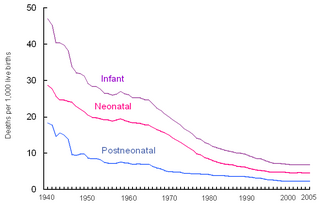 W
WA blighted ovum is a pregnancy in which the embryo never develops or develops and is reabsorbed. In a normal pregnancy, an embryo would be visible on an ultrasound by six weeks after the woman's last menstrual period. Anembryonic gestation is one of the causes of miscarriage of a pregnancy.
 W
WAsherman's syndrome (AS), is an acquired uterine condition that occurs when scar tissue (adhesions) form inside the uterus and/or the cervix. It is characterized by variable scarring inside the uterine cavity, where in many cases the front and back walls of the uterus stick to one another. AS can be the cause of menstrual disturbances, infertility, and placental abnormalities. Although the first case of intrauterine adhesion was published in 1894 by Heinrich Fritsch, it was only after 54 years that a full description of Asherman syndrome was carried out by Joseph Asherman. A number of other terms have been used to describe the condition and related conditions including: uterine/cervical atresia, traumatic uterine atrophy, sclerotic endometrium, and endometrial sclerosis.
 W
WA lithopedion – also spelled lithopaedion or lithopædion –, or stone baby, is a rare phenomenon which occurs most commonly when a fetus dies during an abdominal pregnancy, is too large to be reabsorbed by the body, and calcifies on the outside as part of a foreign body reaction, shielding the mother's body from the dead tissue of the fetus and preventing infection.
 W
WMizuko kuyō (水子供養) meaning "water child memorial service", is a Japanese ceremony for those who have had a miscarriage, stillbirth, or abortion. This practice has become particularly visible since the 1970s with the creation of shrines devoted solely to this ritual. Reasons for the performance of these rites can include parental grief, desire to comfort the soul of the fetus, guilt for an abortion, or even fear of retribution from a vengeful ghost.
 W
WMolar pregnancy is an abnormal form of pregnancy in which a non-viable fertilized egg implants in the uterus and will fail to come to term. A molar pregnancy is a gestational trophoblastic disease which grows into a mass in the uterus that has swollen chorionic villi. These villi grow in clusters that resemble grapes. A molar pregnancy can develop when a fertilized egg does not contain an original maternal nucleus. The products of conception may or may not contain fetal tissue. It is characterized by the presence of a hydatidiform mole. Molar pregnancies are categorized as partial moles or complete moles, with the word mole being used to denote simply a clump of growing tissue, or a growth.
 W
WPerinatal mortality (PNM) refers to the death of a fetus or neonate and is the basis to calculate the perinatal mortality rate. Variations in the precise definition of the perinatal mortality exist, specifically concerning the issue of inclusion or exclusion of early fetal and late neonatal fatalities. The World Health Organization defines perinatal mortality as the "number of stillbirths and deaths in the first week of life per 1,000 total births, that 22 completed weeks of gestation, and ends seven completed days after birth", but other definitions have been used.
 W
WSelective reduction is the practice of reducing the number of fetuses in a multiple pregnancy, say quadruplets, to a twin or singleton pregnancy. The procedure is also called multifetal pregnancy reduction. The procedure is most commonly done to reduce the number of fetuses in a multiple pregnancy to a safe number, when the multiple pregnancy is the result of use of assisted reproductive technology; outcomes for both the mother and the babies are generally worse the higher the number of fetuses. The procedure is also used in multiple pregnancies when one of the fetuses has a serious and incurable disease, or in the case where one of the fetuses is outside the uterus, in which case it is called selective termination.
 W
WA vanishing twin, also known as twin resorption, is a fetus in a multigestation pregnancy that dies in utero and is then partially or completely reabsorbed. In some instances, the dead twin is compressed into a flattened, parchment-like state known as fetus papyraceus.